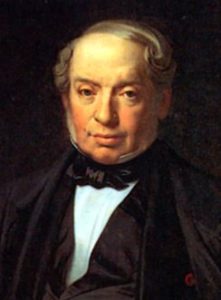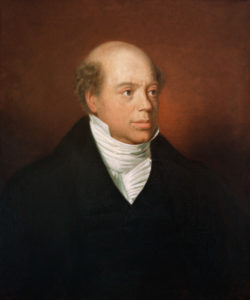Liberator of Jerusalem, Hero of Israel
 Mordechai Gurban (1930-1995) was born in Jerusalem to parents who had both made aliyah in 1913. He joined the Haganah defence force shortly after his bar mitzvah, and went on to its special forces Palmach unit. With the formation of the IDF in 1948 he became a paratrooper, and by this point shortened his last name to “Gur”. After the war, he served in the special forces under the command of Ariel Sharon. In 1955, Gur led Operation Elkayam into Khan Yunis, destroying a key Egyptian military installation, routing their forces, and taking out 72 troops (compared to one Israeli fatality). This led a frightened Egypt to finally sign a ceasefire with Israel, and to stop supporting Palestinian fedayeen terrorists directly. Gur then headed to Paris to study at its prestigious military academy. He returned two years later to take over the helm of the Golani Brigade, transforming it into the IDF’s most illustrious unit. In 1967, Gur led the recapture of Jerusalem (the 55th anniversary of which is this Sunday, Yom Yerushalayim). His radio declaration that Har HaBayit beYadeinu! (“The Temple Mount is in our hands!”) was broadcast to jubilant Jews around the world (see video here). Gur ordered an Israeli flag put up on the Dome of the Rock. When Moshe Dayan saw it through his binoculars, he immediately radioed to take it down, shouting “Do you want to set the Middle East on fire?” Gur believed recapturing Jerusalem’s Old City was his life’s purpose, and even boldly told IDF Chief Rabbi Shlomo Goren back in 1961 that he would be the one to liberate it. Gur was promoted to Brigadier General after the war, and took up oversight of Gaza and the Sinai. Two years later, he was promoted to Major General and took over the Northern Front. In 1972, he was posted as military attaché in Washington, and only returned after the Yom Kippur War to ensure such a catastrophe would never happen again. He became Israel’s 10th Chief of Staff, rebuilding the military and reinvigorating it with renewed morale. In 1976, he planned and oversaw Operation Thunderbolt to save hostages in Entebbe. One of his last missions was a successful 1978 operation into Lebanon to wipe out terrorists. After retiring from the military, he first went to study for a year at Harvard, then went into politics and became a Member of Knesset in 1981. In 1984 he became Minister of Health, and in 1992 was appointed Deputy Minister of Defense by Yitzhak Rabin. Initially, he supported Rabin’s peace initiative but soon saw the negotiations went nowhere and believed the Palestinians used the Oslo Accords as a ruse. He came to oppose the peace process and, despite battling cancer, started planning a run for prime minister. Gur suddenly died shortly after at just 65 years old, which gave rise to an unfortunate conspiracy theory: The death was officially ruled a suicide, yet the accompanying note appeared forged, and the gunshot wound could not have been self-inflicted, leading many to believe he was deliberately silenced. (Rabin would be assassinated just a few months later, launching another conspiracy theory.) Whatever the case, Gur was undoubtedly one of the greatest soldiers and military heroes in Israel’s history. He had also published three popular children’s books and three military books. Today, there is an army base named after him, as well as a street and school in Modi’in.
Mordechai Gurban (1930-1995) was born in Jerusalem to parents who had both made aliyah in 1913. He joined the Haganah defence force shortly after his bar mitzvah, and went on to its special forces Palmach unit. With the formation of the IDF in 1948 he became a paratrooper, and by this point shortened his last name to “Gur”. After the war, he served in the special forces under the command of Ariel Sharon. In 1955, Gur led Operation Elkayam into Khan Yunis, destroying a key Egyptian military installation, routing their forces, and taking out 72 troops (compared to one Israeli fatality). This led a frightened Egypt to finally sign a ceasefire with Israel, and to stop supporting Palestinian fedayeen terrorists directly. Gur then headed to Paris to study at its prestigious military academy. He returned two years later to take over the helm of the Golani Brigade, transforming it into the IDF’s most illustrious unit. In 1967, Gur led the recapture of Jerusalem (the 55th anniversary of which is this Sunday, Yom Yerushalayim). His radio declaration that Har HaBayit beYadeinu! (“The Temple Mount is in our hands!”) was broadcast to jubilant Jews around the world (see video here). Gur ordered an Israeli flag put up on the Dome of the Rock. When Moshe Dayan saw it through his binoculars, he immediately radioed to take it down, shouting “Do you want to set the Middle East on fire?” Gur believed recapturing Jerusalem’s Old City was his life’s purpose, and even boldly told IDF Chief Rabbi Shlomo Goren back in 1961 that he would be the one to liberate it. Gur was promoted to Brigadier General after the war, and took up oversight of Gaza and the Sinai. Two years later, he was promoted to Major General and took over the Northern Front. In 1972, he was posted as military attaché in Washington, and only returned after the Yom Kippur War to ensure such a catastrophe would never happen again. He became Israel’s 10th Chief of Staff, rebuilding the military and reinvigorating it with renewed morale. In 1976, he planned and oversaw Operation Thunderbolt to save hostages in Entebbe. One of his last missions was a successful 1978 operation into Lebanon to wipe out terrorists. After retiring from the military, he first went to study for a year at Harvard, then went into politics and became a Member of Knesset in 1981. In 1984 he became Minister of Health, and in 1992 was appointed Deputy Minister of Defense by Yitzhak Rabin. Initially, he supported Rabin’s peace initiative but soon saw the negotiations went nowhere and believed the Palestinians used the Oslo Accords as a ruse. He came to oppose the peace process and, despite battling cancer, started planning a run for prime minister. Gur suddenly died shortly after at just 65 years old, which gave rise to an unfortunate conspiracy theory: The death was officially ruled a suicide, yet the accompanying note appeared forged, and the gunshot wound could not have been self-inflicted, leading many to believe he was deliberately silenced. (Rabin would be assassinated just a few months later, launching another conspiracy theory.) Whatever the case, Gur was undoubtedly one of the greatest soldiers and military heroes in Israel’s history. He had also published three popular children’s books and three military books. Today, there is an army base named after him, as well as a street and school in Modi’in.
Jerusalem: 4000 Years in 5 Minutes (Video)
Rabbi Sacks: What Jerusalem Means to Me
The Abandoned Crown of David: Reflections on Yom Yerushalayim
Words of the Week
Can you imagine what the reaction would have been in the Muslim world if a photograph of that had been published? I’m proud that we raised the flag, and I’m relieved that we took it down.
– Arik Achmon, the IDF soldier who had put up the Israeli flag on the Dome of the Rock


